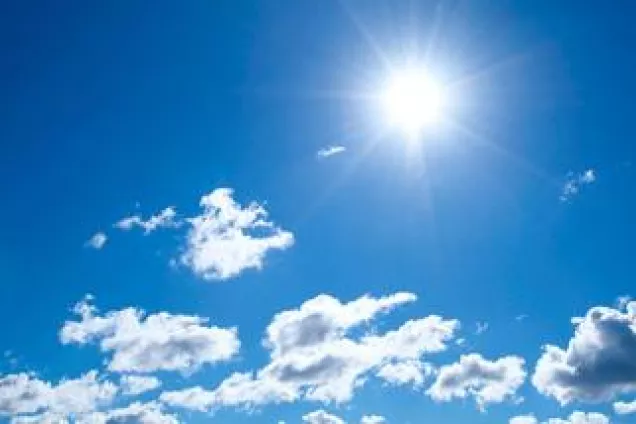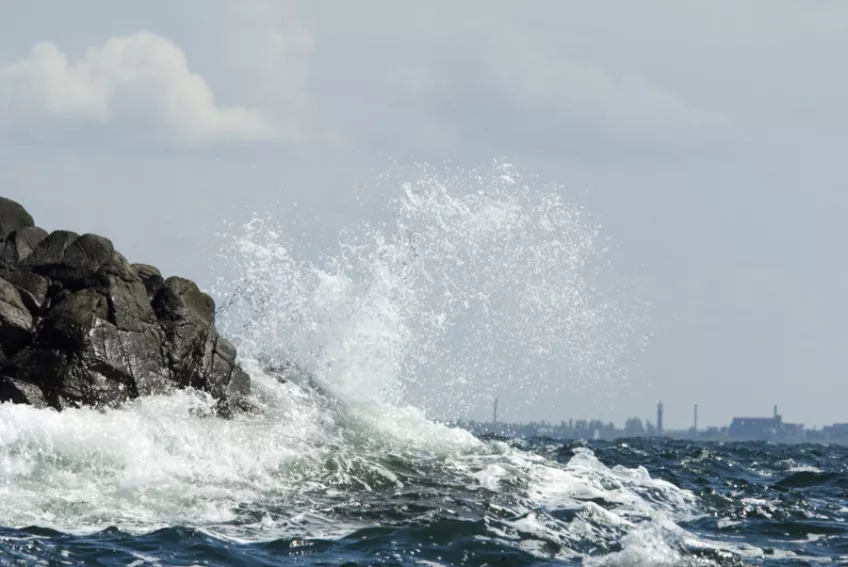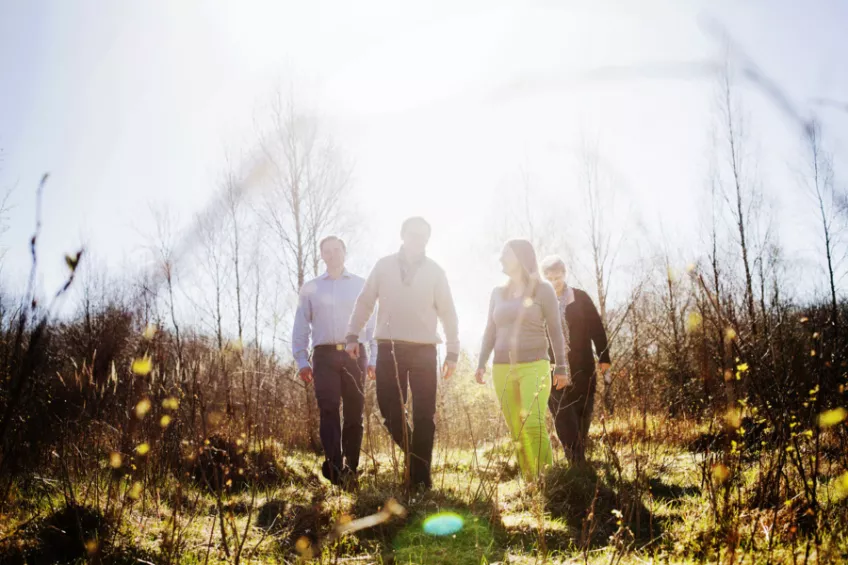Earth System and Climate change
The climate system encompasses the global atmosphere, oceans, land surface, cryosphere (snow, sea ice, glaciers and ice sheets), vegetation and various biogeochemical processes such as the carbon and nitrogen cycles. The climate is around us in temperature, clouds, precipitation, sea levels, snow and ice, winds, ocean currents, and much more.
The climate system has a history, and it has a future. Studies into past climates, today’s climate, and alternative future climates are research areas, which complement each other and together underline comprehensive understanding of the climate system.
Understanding the climate system
Understanding the climate system is particularly topical today, as we observe that the climate system is currently undergoing rapid change.
Studies underline that these changes are predominantly caused by our way of living – how we travel, supply energy, produce goods, the food we eat, how we live – as these involve the use of fossil fuels and land use change, with concomitant emissions of greenhouse gases into the climate system.
The effects of the resulting stronger greenhouse effect are already manifesting themselves in increased global temperature, melting sea ice and glaciers, rising sea levels, and other trends. This is a fundamental change as it affects agriculture, ecosystem services, risks for natural disasters, economy etc.
Knowledge from many different scientific fields help us to better understand and address these questions. Furthermore, climate change strongly links to other global grand challenges, such as poverty reduction, protection of biodiversity, economic growth and the overall pursuant of sustainability.
Natural climate variation and change
Reconstruction of past climates, beyond the period in time for which there are direct measurements is one means to better understand basic climate processes and how the climate system responds to forcing.
This informs us about the climate system in ways that cannot be addressed by direct observations, and contributes to our overall knowledge of climate under change.
Research at Lund University deals with:
- Reconstruction of historical solar activity
- Variations in the Earth’s albedo and climate in both warm and cold periods over the last 70 million years, and how these variations have affected ecosystems
- Interactions between glaciers, ice sheets and climate
- Reconstructions of climate and the underlying drivers over the last 15 000 years
- Observations and modelling of current climate variation and extreme events in the climate system
Physical processes in the climate system
The climate we experience results from and is mediated by the action of a host of processes in the atmosphere, soils, oceans, and snow and ice components. They are also important determinants of elemental cycles, for example the carbon cycle which connects carbon stored in the ecosystems, ocean and atmosphere. Examples of such processes include formation of small particles (aerosols) in the atmosphere, cloud formation, radiative transfer, large-scale circulation in the atmosphere and oceans.
Knowledge about these and other processes is crucial for our understanding of climate variability and change both on global and regional scales, and to develop climate models for projections of future climates.
Research at Lund University deals with:
- Trace gases, particles and clouds in the atmosphere and their impacts on climate.
- Transport and exchange of water and energy between soil, vegetation and the atmosphere
- Climate change effects on permafrost and glaciers
The carbon cycle
Carbon is omnipresent in the climate system, stored in geological carbon stocks, oceans, the atmosphere, soils and the biosphere. The carbon cycle is about how carbon is exchanged between these reservoirs in physical, chemical and biological processes. The carbon cycle is a natural process. The anthropogenic use of fossil fuels and the resulting emissions into the atmosphere are, however, not. The anthropogenic carbon dioxide emissions are nevertheless partly sequestered by the oceans and terrestrial ecosystems, which to some extent curbs the atmospheric increase, while simultaneously affecting the ecosystems.
Knowledge about the carbon cycle is an important determinant for the understanding of how future emissions will further feed the global warming, as climate change changes the carbon cycle. Research into the carbon cycle is also relevant for the development of strategies for mitigation related to land use and adaptation.
Research at Lund University deals with:
- Fluxes and turnover of carbon dioxide and methane in relation to local, regional and global climate, for example in Arctic and boreal areas
- Historical atmospheric carbon dioxide levels
- Carbon fluxes at landscape scale in relation to climate change and land use
- Plant respiration, energy efficiency and carbon balance
- Turnover and impact of organic carbon in fresh water and coastal aquatic ecosystems
Climate models
Climate models are mathematical descriptions of the properties and processes of the atmosphere, land areas, oceans, lakes and ice sheets, as well as of their interactions and feedbacks.
Research into climate models at Lund University focuses on the development of advanced global and regional climate models into so-called Earth system models, which apart from the atmosphere, oceans, sea ice and land also include biological and chemical components of the climate system
Research at Lund University deals with:
- Dynamic modelling of vegetation in climate models and accounting for feedback processes between the physical climate system and terrestrial ecosystems
- Development of process descriptions of how the vegetation and the carbon cycle affect and are affected by climate
- Application of global and regional climate models for advanced projections and scenarios
Climate effects
Climate change has wide-ranging effects on many sectors and systems, including biodiversity and ecosystem structure and function. These changes will in turn affect basic ecosystem services and give rise to biogeochemical feedbacks in the ecosystems.
Research at Lund University deals with:
- Effects of climate change on biodiversity in terrestrial ecosystems
- Fluxes of carbon and ecological effects in surface waters
- Process-based modelling of how climate change, land use and atmospheric composition influences ecosystems at various scales
- Effects of extreme weather and climate events on trees, forests and forestry
- Processes and models describing interactions between vegetation, soils, ecosystem change and climate
Contact information and links
Related institutes and research centres at Lund University:

MERGE
merge.lu.se

LU Land
lu.se

EIT Climate-KIC
climate-kic.lu.se

Main page about research at Lund University
lunduniversity.lu.se



